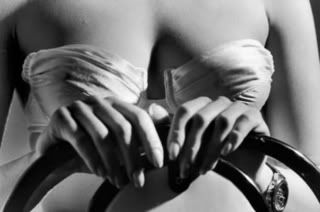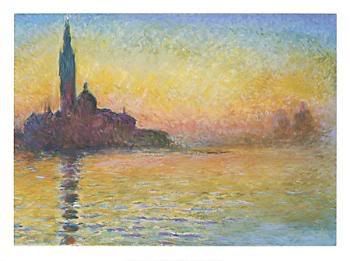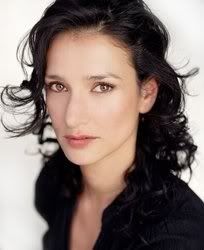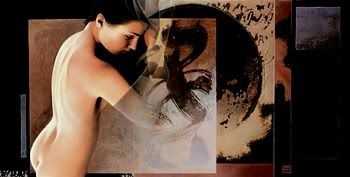
Orange blossom is one of the most usual floral notes used in perfumery and its glorious slightly fruity, sweet and pervasing yet fresh scent has been brandishing its charms in traditional colognes and eaux de toilette for centuries.
Although an unmistakably floral in tone aroma it does hint of the fruit to come in a very elegant way that aromachemicals cannot mimic satisfactorily.
The word "orange" comes from Sanskrit "narang" or Tamil "naraththai". Another theory pertains that it is tied to a Dravidian root meaning "fragrant".
Oranges originated in southeast Asia in fact which is not unrelated to etymology (in India, Vietnam or southern China). The fruit of Citrus sinensis is called sweet orange to distinguish it from Citrus aurantium, the bitter orange.
Some languages have different words for the bitter and the sweet orange, and one of them is indeed Modern Greek which differentiates bettween bitter (nerantzi) and sweet (portokali which derives from Portuguese). The reason for these differences is that the sweet orange was brought from China to Europe during the 14th century for the first time by the Portuguese. For the same reason, some languages refer to it by "Applesin" meaning "Apple from China".
It is common to come across mentions of "arancia" or "arancio" ~deriving from latin~ on perfume bottles in italian as well as "zagara", "naranja" in spanish while in hebrew the name is "Zohar", also reflected in the portugeuse language.
Bitter orange is trully the pig of perfumery as it gives us so many aromatics for perfumes: the essential oil of the blossom, the heady and viscous absolute from the flowers that is rendered through a solvent extraction, cool neroli from a different method of manipulation of the flowers (distillation) that gives an aroma that is tangier, slightly more bitter and thus a little more atsringent and fresher, bitter orange oil from the rind of the fruit with its sweet-bitter scent, and the more masculine in tone, greener petit-grain from the distillation of twigs and leaves.
Orange blossom absolute is a miracle to behold both in terms of cost and its elusiveness. Some can even smell rank if not of the proper quality and only the real, quality thing can be the heady touch that turns heads and makes you weak in the knees as if catching a whiff of it passing a sunny orange grove in April.
The includion of orange blossom is de riguer in many oriental mixes, although its role is not limited to those: it features as a protagomist in many eau de colognes along with its sidekick neroli as well as in chypres and elegant florals.
Termed a white floral for its small white, slightly waxy petals, it is one of the loveliest blossoms to adorn a homemade bouquet and it has long been the state flower of Florida. The blossom is also emblematic of Riverside in California, famous for its Navel or Washington variety of oranges.
It is traditionally associated with good fortune and for that reason it was popular in bridal bouquets and head wreaths for weddings for some time. Even now in Greece and the Mediterranean it is customary for wedding taking place in villages or by the sea to adorn the head of the bride with simple small blossoms, which is very becoming especially on the naturally darker hair of those women. Folk songs have been composed drawing parallels between the bushy, fragrant head of a bitter orange tree with the head of a lovely lady.
The petals of orange blossom can also be made into a delicately citrus-scented version of rosewater, called "anthonero" (flower water). Orange blossom water is a common part of Middle Eastern and Mediterranean cuisine and it features in both sauces and in pastries. One such is the famous kourambiedes, an Easter and Christmas cookie that is made with rich butter and crushed almonds, rolled into dust sugar and gloriously eaten with coffee after meals. You can see a recipe for them here.
Orange blossom honey is a variation of honey that is not unusual in those areas of the world either: it is produced by putting beehives in the citrus groves during bloom, useful for agriulture as well as it pollinates seeded citrus varieties. Orange Blossom honey is highly prized for its peculiar, delicate like orange taste that differentiates it from aromatic honeys from thyme blossoms or pines.
Orange blossom even gives its touristic nickname to the Costa del Azahar ("Orange-blossom coast") in Valencia, a place that provides lots of orange fruit throughout Europe.
Starting our exploration of orange blossom, we focus on the more realistic interpretations of this heady and fresh note as attested by the following fragrances:
Fleur d'oranger by L'artisan Perfumer, Jo Malone Orange blossom Côté Bastide Fleurs d'oranger and I profumi di Firenze Zagara.
All of them explore the fresher, tarter aspect of the note, in various degrees and nuances.
The golden standard is indeed Fleur d'oranger by L'artisan parfumeur, based on a single harvest of Nabel in Tunisia, in 2004 and basing its exclusive and unfortunately very ephemeral success on the quality of that exceptional crops that yielded its sweet and light aromas into the embrace of a master perfumer such as Anne Flipo (who was responsible for Verte Violette and La Chasse aux papillons in the L'artisan stable of thoroughbreds).
It launched in 2005 for a very limited number of bottles for a very costly price, encased in a wooden box like a vintage of precious wine. And it is indeed precious in its single-minded loveliness that wraps you in cool cotton sheets of luminosity and joy. Its crystalline appearence shimmers in the light like a precious Baccarat ornament and it enslaves you upon testing as the truest soliflore on orange blossom created. Although light in tone it has good tenacity which adds to its charms. It is a pity that when the distribution ends there will be no more...
Jo Malone's Orange Blossom is a sweeter rendition which lacks the crystalline aspect of L'artisan, however it is quite close to the actual blossom and is very realistic, denoting a high percentage of natural essences used. The opening is a but fruiter and has a hint of the zest but it soon develops into the white floral that is so beloved by people of the South. The marriage of clementine leaves (a comparable species) and water lilies gives a limpidity and airiness that transports this into sunny climates and white clothing paired with silver jewels worn on a casual walk. It is unaffected, elegant and very popular in Greece, proving to be the bestseller of Jo Malone's line during the warmer months according to my sources in the company.
Zagara by I Profumi di Firenze is a citrusy gregarious thing based on the tart and cool elegance of bergamot that segues into notes of the white flower restraining the sweetness and injecting happiness and joy. It is deliriously happy and cheerful and it can be relied upon to lift spirits and rejuvenate on hot days.
Côté Bastide's Fleurs d'oranger rendition is also exceptionally true and light with a hint of citrus and green tonalities that lend a slight bitter edge that is again reminsicent of the living tree and the surrounding air. It is its greatest strength and its stamp of approval. Eminently wearable in summer and highly recommended for stuffy offices and homes.
Next post will tackle a different interpretation of the orange blossom note.
Painting "Man in Hat" by greek painter Nicolaos Lytras courtesy of allposters.com.
.jpg)














.jpg)











